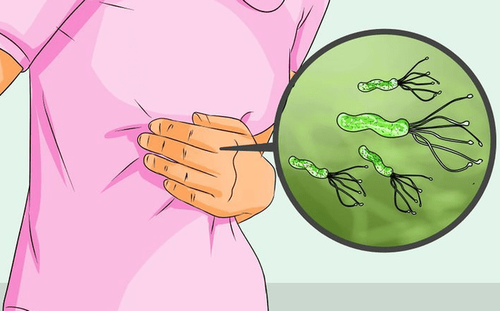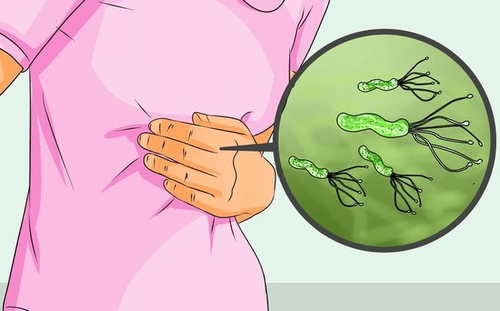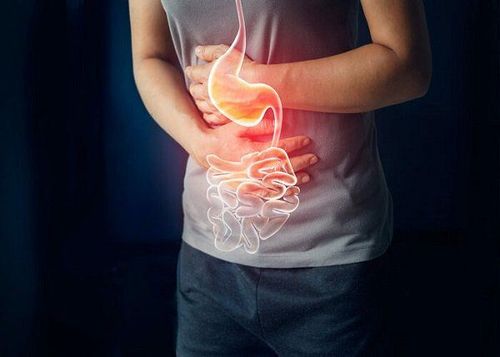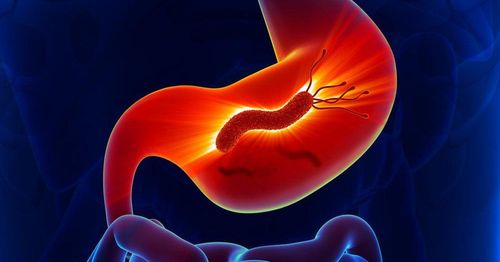This is an automatically translated article.
The article was written by MSc Mai Vien Phuong - Department of Examination & Internal Medicine - Vinmec Central Park International General HospitalCarcinoid tumors are unusual, slow-growing cancers that often arise from many organs in the body, but mainly from the gastrointestinal tract (appendice, stomach, small intestine, colon, rectum). ..) and from the lungs, possibly from the ovaries and testes.
3. Risk of carcinoid tumor formation
3.1 What is a carcinoid tumor? Carcinoid tumors are different from common cancers. It grows very slowly and rarely causes symptoms unless it is at an advanced stage. Even under the microscope, carcinoid tumors appear normal, even at the stage where they have metastasized.
Carcinoid tumors can produce and release hormones into the body and cause unusual symptoms, such as diarrhea or hot flashes.
3.2 Manifestations of carcinoid tumors
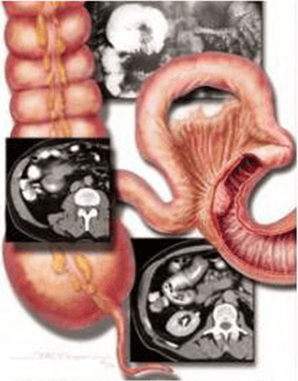
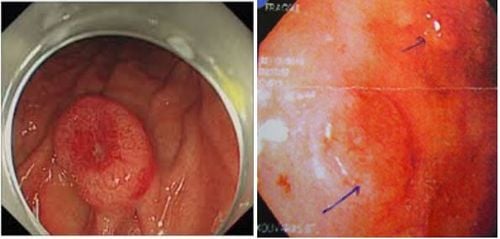
Since there are no symptoms in the early stages, it is difficult to diagnose carcinoid tumors early. In many cases, carcinoid tumors are discovered incidentally during other medical examinations. Depending on the location of the tumor, there are manifestations:
Tumor in the stomach: abdominal pain; Tumors in the small intestine and colon: disturbances in bowel movements, abdominal pain, or sometimes bowel obstruction Rectal tumors: pain and rectal bleeding Symptoms may be due to carcinoid tumors:
Have hot flushes in the face and neck ; Severe and prolonged diarrhea; Shortness of breath, wheezing sound; Heart beats fast and strong; Tired; Swollen feet and ankles; Abdominal pain or bloating. All of the above symptoms are not specific to carcinoid tumors, and can be caused by many other diseases. However, if it persists and increases, you need to see a doctor immediately.
3.3 Causes of carcinoid tumors The cause of carcinoid tumors is unknown. Carcinoid tumors arise from cells of the neuroendocrine system, so they are both hormone-secreting and have neuron-like properties.
In the digestive system, neuroendocrine cells regulate the release of digestive juices, control the movement of food in the stomach and intestines, and can help control the development of digestive tracts. other cell types in the digestive system. In the lungs, neuroendocrine cells help control the flow of air and blood, and may control the growth of other lung cells.
Carcinoid tumors occur when these neuroendocrine cells mutate and overgrow. First, carcinoid tumors are very small and slow growing. It is not clear what causes the tumor to grow faster, causing symptoms, while in some cases the tumor remains small and has no symptoms.
Although carcinoid tumors can appear at any age, it is more common in the elderly. Carcinoid tumors are more common in women than in men. If a parent has a carcinoid tumor, the child is more likely to get it.
In addition, a family history of multiple endocrine neoplasia type 1 is also considered a risk factor for carcinoids. Smoking increases the risk of carcinoid tumors in the lungs. Other diseases such as gastric acid insufficiency, gastritis, or pernicious anemia... increase the risk of gastrointestinal carcinoids.
3.4 Complications of Cardiovascular Disease: Carcinoid hormones can cause thickening of the endothelium of the heart chambers, heart valves, and blood vessels. The peculiarity is that the right chamber of the heart is more commonly affected than the left. As a result, it causes regurgitation of the mitral and tricuspid valves, but causes stenosis of the pulmonary valve. If left untreated, these conditions can cause an enlarged heart and heart failure. Cushing's syndrome: Carcinoid tumors in the lungs have the ability to produce too much of the hormone ACTH, which in turn stimulates the adrenal glands to produce too much of the hormone cortisol. If this condition persists, it can cause Cushing's syndrome. Acromegaly: Lung carcinoid tumors are also capable of producing too much growth hormone GH causing acromegaly. Intestinal Obstruction: Large intestinal carcinoid tumors can cause intestinal obstruction, if prolonged can cause intestinal necrosis at the site of obstruction leading to intestinal perforation, infection and severe shock with high mortality. Gastric ulcers: Some carcinoid tumors of the stomach secrete too much of the hormone gastrin, which stimulates the stomach to produce more acid. As a result, the stomach has many ulcers, causing bleeding, even perforation ... called Zollinger-Ellison syndrome. 3.5 Gastric Carcinoid Tumors There are three types of gastric carcinoid tumors: type L is associated with autoimmune gastritis, type Il is associated with multiple endocrine neoplasia (MEN I and Zollinger-Ellison) syndromes, and type I. I is the most malignant type.There are a number of features that help distinguish these types, based on factors such as age, sex, comorbidities, endoscopic imaging characteristics, lesion location, and concentration. gastrin in the blood, whether there is G-cell hyperplasia...
The pathogenesis of type l carcinoid tumor formation is the loss of parietal cell upregulation of gastrin production. leads to hyperplasia of ECL cells, thereby increasing the risk of dysplastic lesions.
Over time, these precancerous lesions will progress to gastric carcinoid tumor type I. The clinical symptoms of patients are often poor, so they are mainly detected by endoscopy.
Therefore, when conducting endoscopy for patients with VTE, it is necessary to carefully evaluate if the patient has polypoid lesions in the body region. Although carcinoid tumors are malignancies with a low rate of gastric malignancy (.1%), a proportion of patients have concomitant gastric carcinoid tumors. pernicious megaloblastic anemia (50%). In terms of prognosis, usually patients with type l carcinoid tumors are asymptomatic, the 5-year survival rate is 95% and the 10-year survival rate is 74%.
3.6 Treatments for gastric carcinoid tumors The treatment for carcinoid tumors depends on whether metastases have been present. If there is no metastasis, just surgery to remove the tumor is enough, the methods of tumor removal include:
Laparoscopic method: Carcinoid tumor can be removed by flexible endoscopic method, depending on the size. The size, nature of the tumor as well as the patient's health that give the appropriate treatment regimen Surgical method: surgery to remove part or all of the cancer cells depending on the specific case.
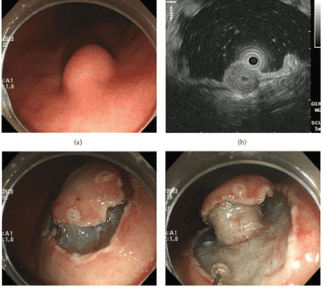
In cases where metastases are present, treatment is different, including:
Slowing tumor growth: Monthly injections of octreotide (sandostatin) can slow tumor growth and reduce symptoms. symptoms such as hot flushes or diarrhea. Intervention stops the blood supply to the tumor metastasized to the liver by occlusion of the hepatic artery. This procedure has some risks, so doctors will have to discuss it carefully with the patient. Kill cancer cells with heat: Using radio waves to generate heat, which is transmitted through a needle close to cancer cells in the liver to destroy these cells. This method is indicated for patients with some small metastases in the liver. It is quite safe, the risk of infection or bleeding is low. Chemo: also has the effect of killing and shrinking tumors. Vinmec International General Hospital is one of the hospitals that not only ensures professional quality with a team of doctors, modern equipment and technology. The hospital provides comprehensive, professional medical examination, consultation and treatment services, civilized, polite, safe and maximum sterilization space. Customers when choosing to perform tests here can be completely assured of the accuracy of test results.
Please dial HOTLINE for more information or register for an appointment HERE. Download MyVinmec app to make appointments faster and to manage your bookings easily.





